|
 Dwight Peck's personal website Dwight Peck's personal website
Sicily in December 2012
On the track of the Carthaginians, Greeks, Romans, Arabs, Normans, French, Spanish, Italians and Commissario Montalbano
You may not find this terribly rewarding unless you're included here, so this is a good time for casual and random browsers to turn back before they get too caught up in the sweep and majesty of the proceedings and can't let go.
The view from Erice
(your one-stop shop for souvenirs, typical products, and gadgets)

Kristin's propelling our hapless VW at daunting speeds across Sicily (the Palermo-Catania autostrada is free) as we're bound for the west coast. That's Enna on the hilltop.
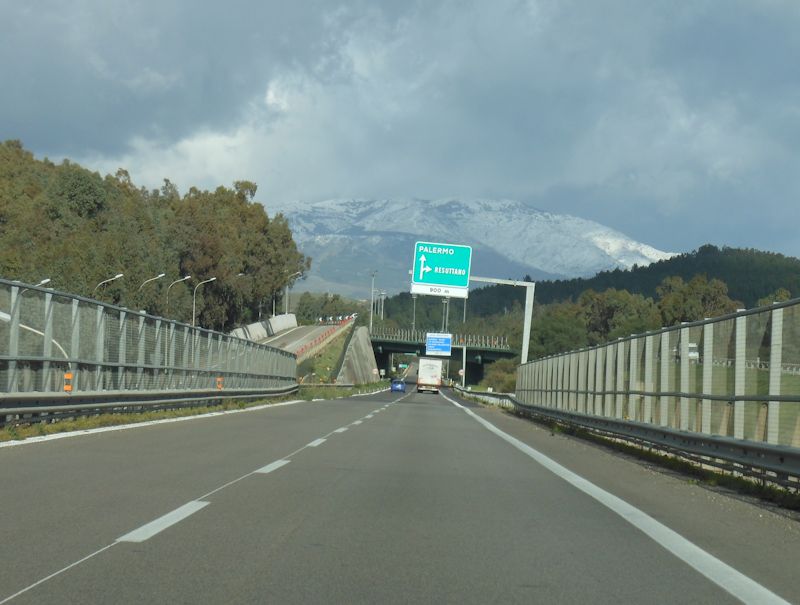
Snow on the mountains (the snowshoeing season is probably getting underway now in the Jura)

We're past Palermo (oh, such traffic!) and out in the west now, passing Segesta with its Doric temple alone on a sacred hilltop nearby.

We've walked up from the ticket office and just realized that we haven't got time to continue the half hour up to the city itself or to wait for the next bus up the road.

Segesta was a major city of the indigenous Elymian people of northwest Sicily, but they mixed with Greeks and took on Hellenic styles and assumptions. They feuded for centuries with the people of Selinunte on the south coast, with wars in the early 6th century B.C. and again in the mid-5th, but in 415 B.C. they called upon the Athenians for help against Selinunte, and the Athenians responded with its catastrophic Sicilian Expedition that got wiped out at Syracuse in 414.
So, next, Segesta invited Carthage to lend a hand, and the Carthaginians promptly destroyed Selinunte (we'll see that later in the week). It remained a Carthaginian ally for the next century-plus and allied with Pyrrhus of Epirus in his useless attempt to conquer Sicily, but when the Romans conquered the place in 260 B.C. the Segestans weren't punished too Romanly because the Romans believed that they and the Elymians were both descended from the brave heroes who escaped from Troy (like Aeneas, cf. the Aeneid).

The temple, in the Doric style, dates from the late 5th century B.C. The city itself was evidently destroyed by the Vandals, though an Arab community dwelt on the site in the Norman period -- it's said to have been permanently abandoned in the late 13th century, and so must we now do in the 21st.
Erice
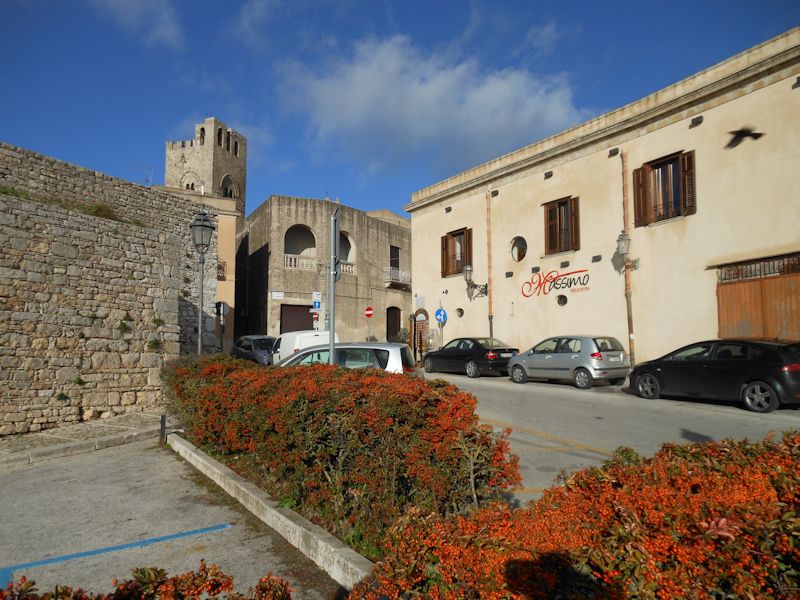
Our host Massimo is meeting us here at the carpark at the entrance of the town, as we tourists are not meant to be driving up and down the city streets for reasons which will become apparent. Erice, perched on Mount Erice some 750m up a winding road from Valderice near the west coast of Sicily, was also originally indigenous Elymian but was Hellenized early on (since its founder and king, Eryx, the famous boxer, was actually a son of Aphrodite but regrettably was beaten to a pulp by Hercules).
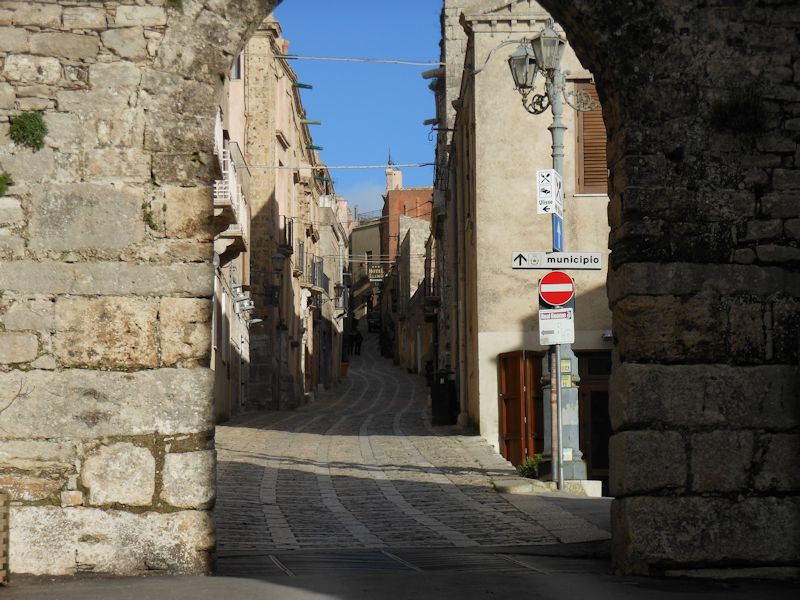
The High Street. Erice's heyday lay in early classical times, beginning in the 7th-6th centuries B.C. when its temple of Venus, the love goddess, drew shall-we-call-them 'worshippers' from all over the Mediterranean basin (sailors and the 'sacred prostitutes', woo woo) -- especially as the Roman Venus was identified with the Greek Aphrodite and the Carthaginian/Phoenician Astarte (= a multinational supply of sailors coming along to perform their ritual obligations). The Norman Castle is still called the Castello di Venere because in the 12th century the Normans built the thing on top of the ancient sanctuary.

The interior courtyard of our digs in the centre of Erice -- the Pietre Antiche apartments run by Massimo who drove up from his base in Trapani to settle us in (and to see us off contentedly some days later)

We're in the Ginestra flat on the terrace level -- two downstairs, two upstairs, all beautiful.
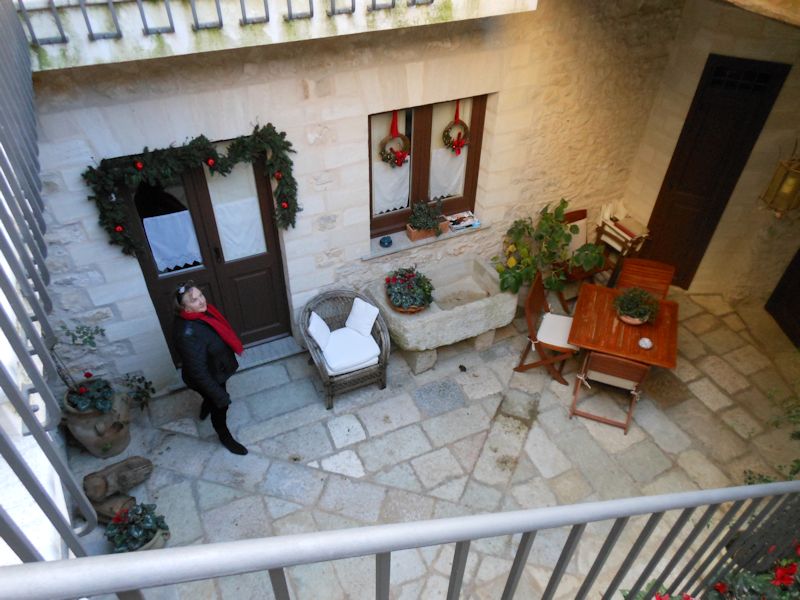
Kristin in the courtyard. The Normans renamed the town Monte San Giuliano in gratitude for various services that only saints can perform really well (the Arabs called it Hamid's Mountain, probably for similar but obsolete reasons), but the name was changed back to Erice in 1934.
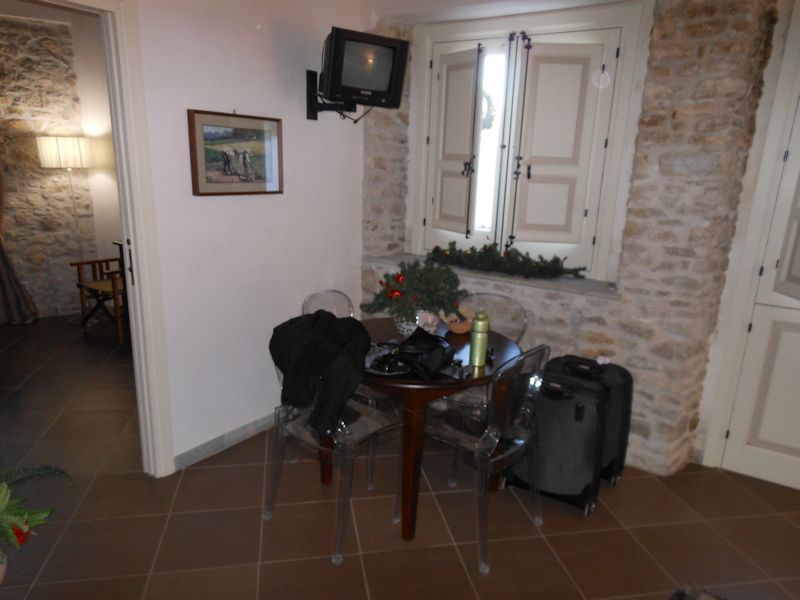
The Ginestra (all the apartments are named after flowers I know nothing about)

Kristin and the views

It's still a little too Christmasy for sitting out on the terrace with lemonade and a Sicily guidebook.
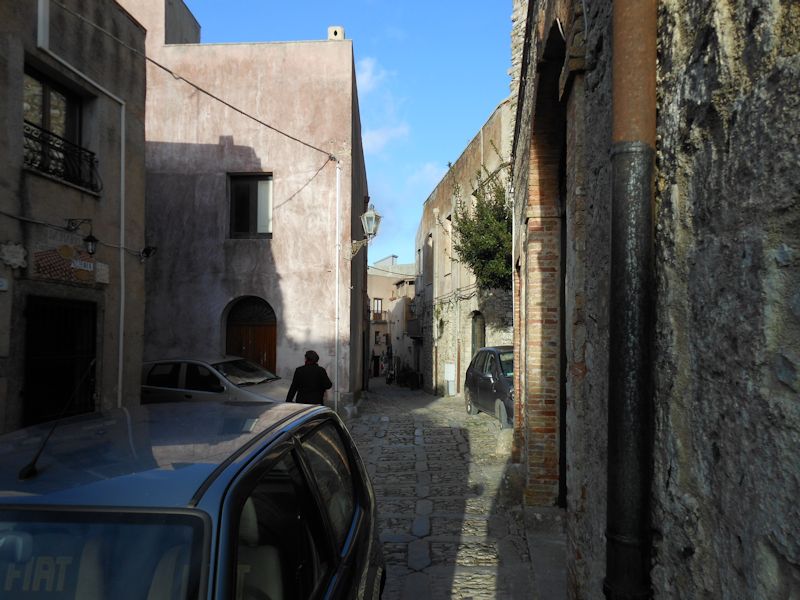
Our street, the Via Giuseppe Fontana, is just above the main square, the Piazza Umberto I.
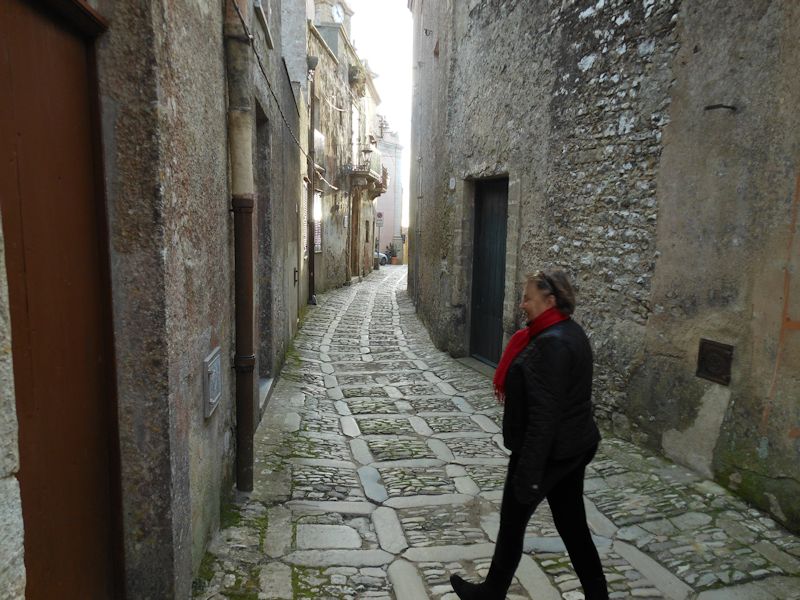
Erice is basically a small medieval city: most of the streets are de facto pedestrian zones, and the thoroughfares are still only one car's width across. It's all ringed with carparks that look to be very expensive in summer, but are free now.
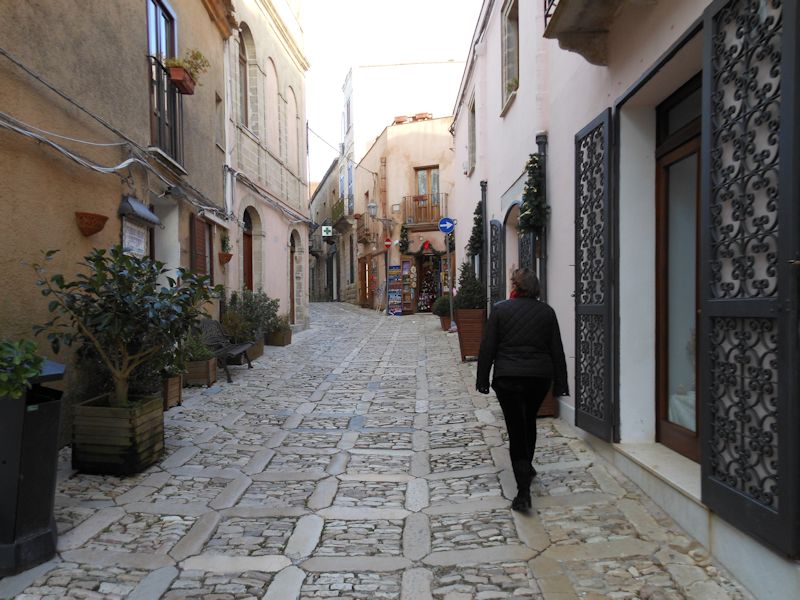
At 750m altitude on the western side of the island, the weather can be more blustery, foggy, chilly than we might have hoped; but nice.
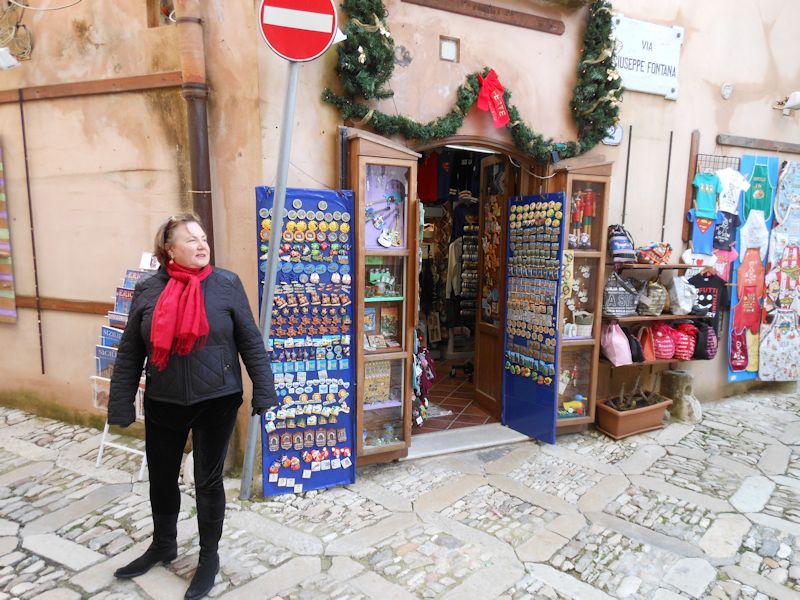
Erice is known for certain crafts: frazzate rugs, almond biscuits, other stuff, and the food in the single grocery is filled with interesting local products, many of which we carted back to the room in a rented wheelbarrow. Here, though, we seem to have knick-knacks and gadgets mostly.
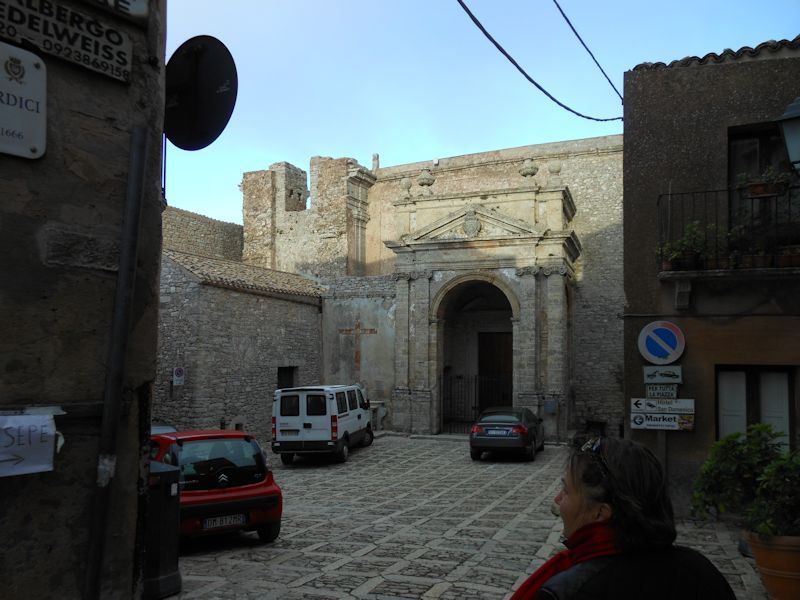
The San Domenico church -- it's as if there's an annual competition going on (like balcony flowers in Swiss villages) for creating ingenious crèches for the Nativity, in the churches, on the street corners, in little cubby holes around town. One of them is in this little piazza.
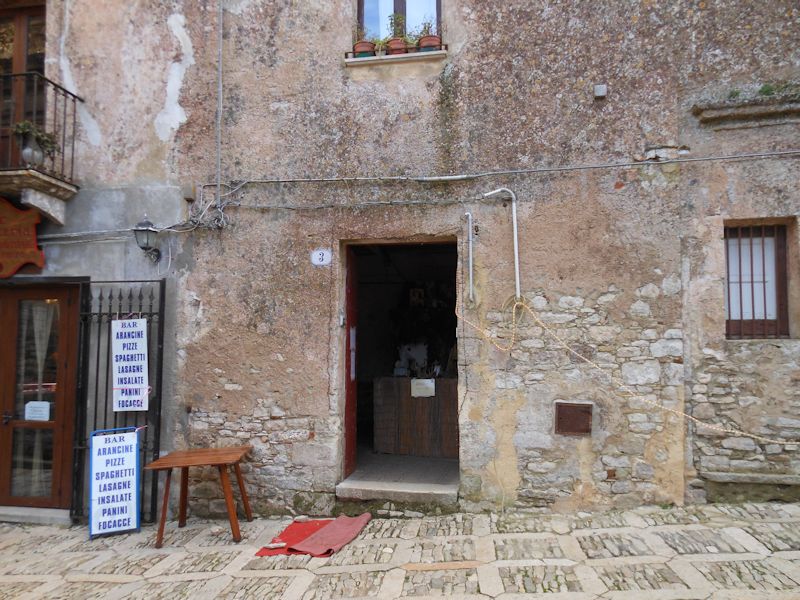
Here: a dedicated young man was just opening his presepio and in succeeding days had his signs out front, inviting passersby in and explaining everything shyly but enthusiastically, free of charge.
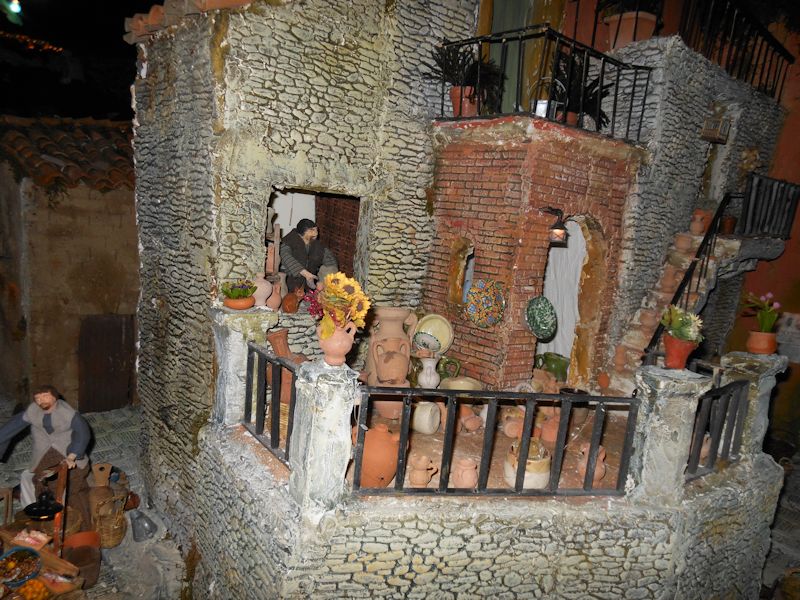
He must have been working on all this for years -- the figures move like clockworks, real water runs through brooks, lights simulate day and night, storms and volcanoes . . .

. . . and little white-hooded Ku Klux Klan processions animate the streets.
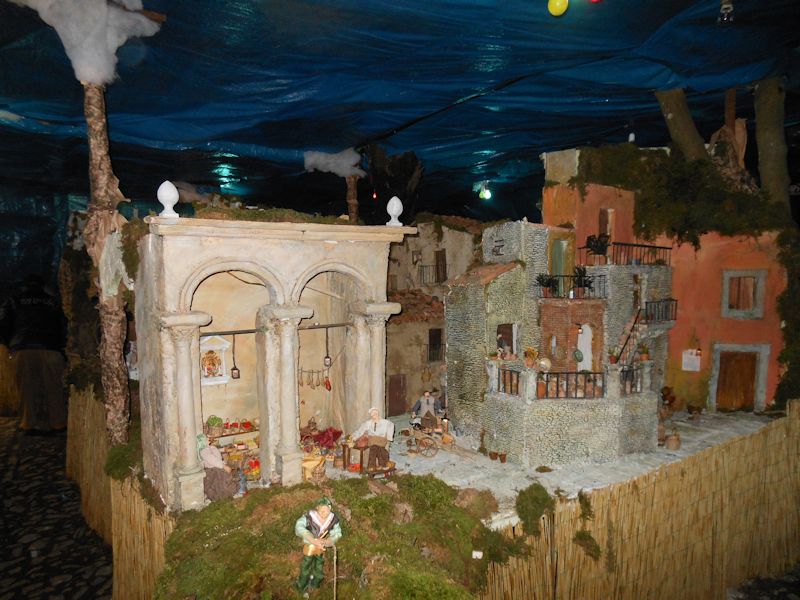
Everyone should have a hobby.

-- Come in and buy something, if you dare.
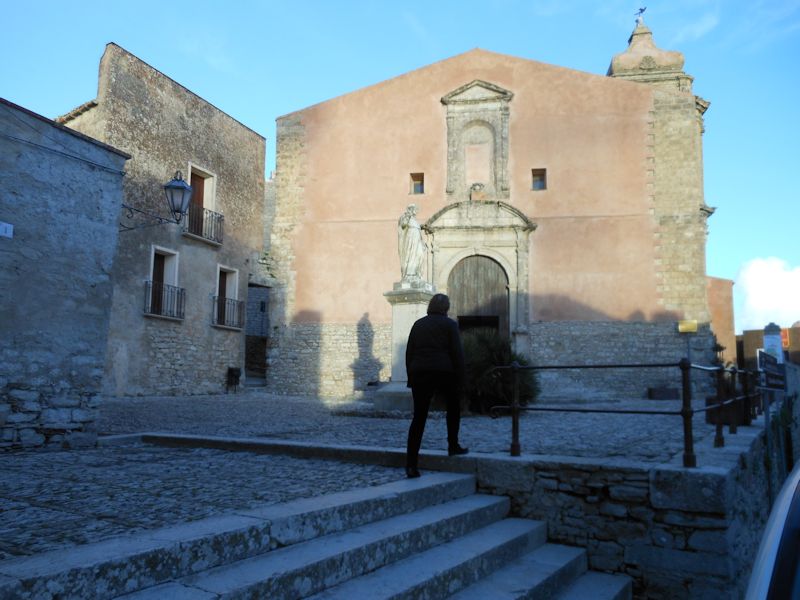
The Piazza San Giuliano -- Roger I ordered the fine old church built in 1076 to honor Saint Julian, a saint who was extremely forthcoming in helping the Normans to defeat Muslims, and he's been called the Liberator and Protector of Erice ever since. The nave collapsed in the 20th century but you'd scarcely notice.
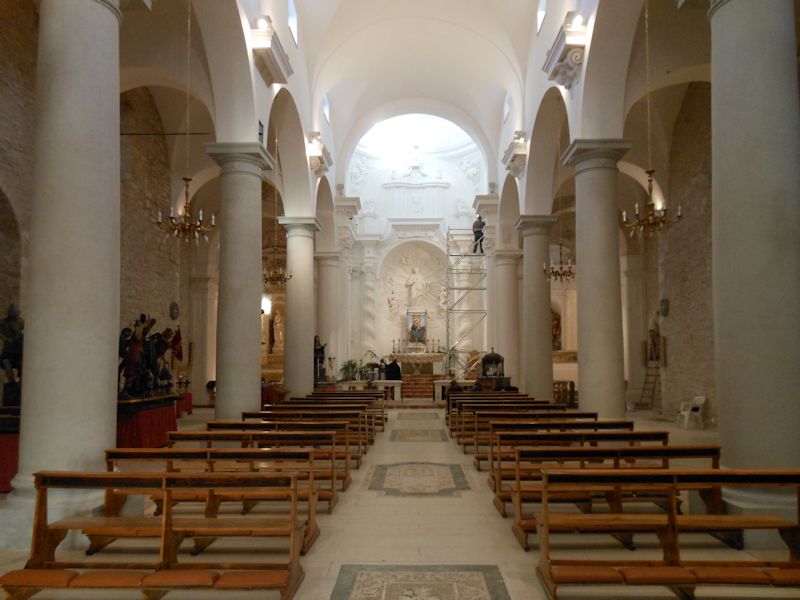
A beautiful church; just now, everybody's up in the rafters hanging Christmas festooneries and probably don't know we've snuck in.
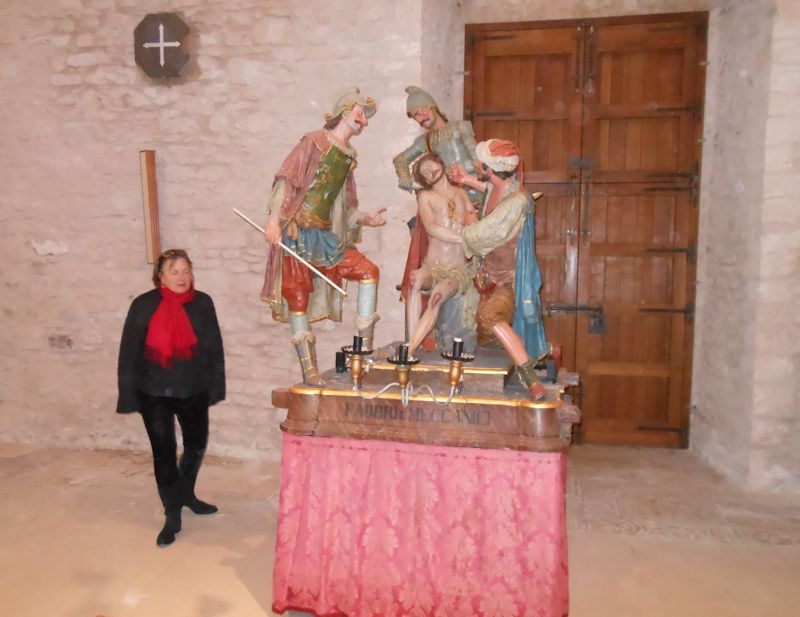
Umm, errmm. It's hard to know what to say; it's hardly the Christmas spirit as I recall it in Bergen County, N.J.

Beautiful and joyous Christmas decorations -- birth of the Christ child, frankincense and myrrh, all that stuff. (These things are famous as the Gruppa Misteri.)
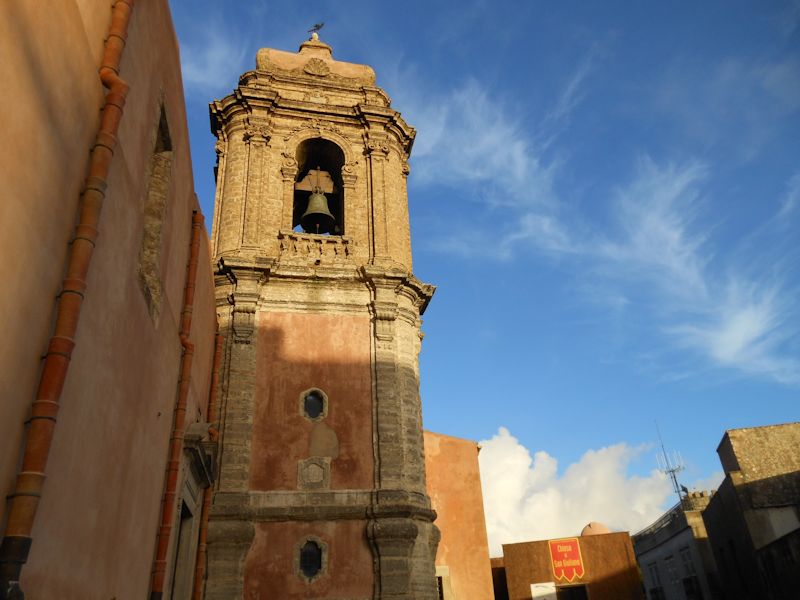
The baroque San Giuliano tower, built in 1770

Down at the east end of town are the gardens, and at the foot of the gardens are the Balio Towers, originally the front towers of the Norman Castle, restored by the Count Agostino Pepoli in the 1870s and turned into a luxury hotel of seven rooms, called the Torri Pepoli, in 2005.
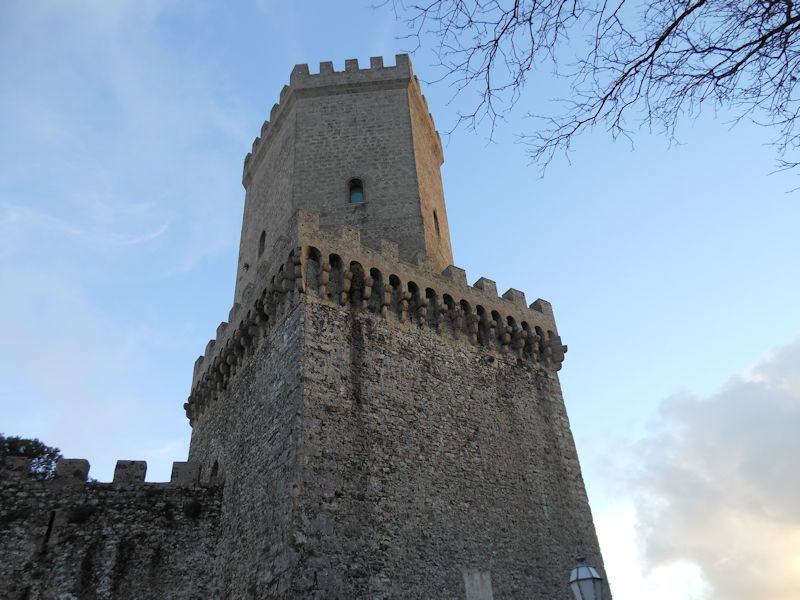
One of the Balio towers at the hotel -- the bajulo was the bailiff or governor, the representative of the sovereign.
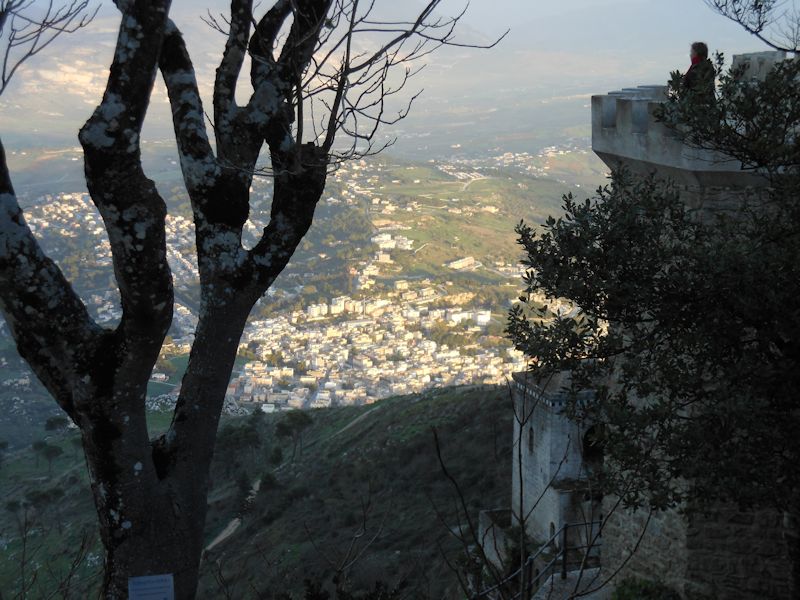
Kristin viewing Valderice, 'Lower Erice', down the slope a ways
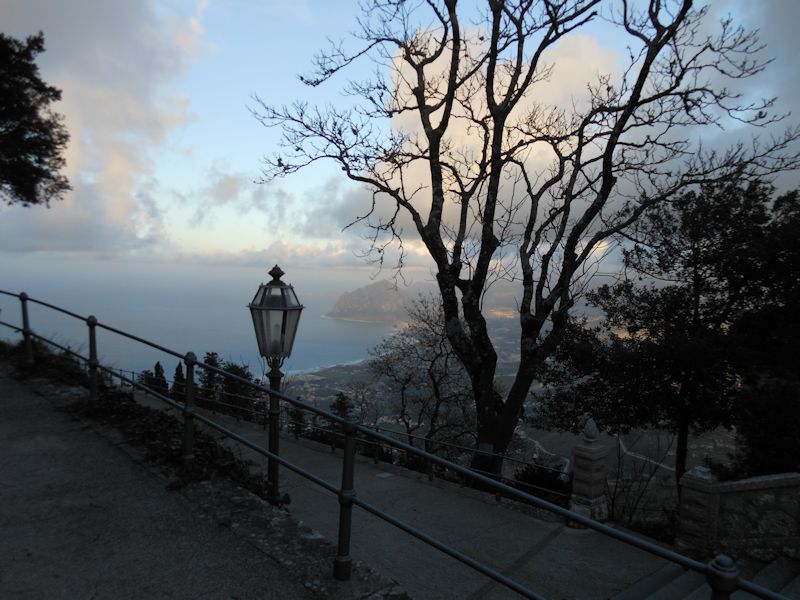
A view to the north
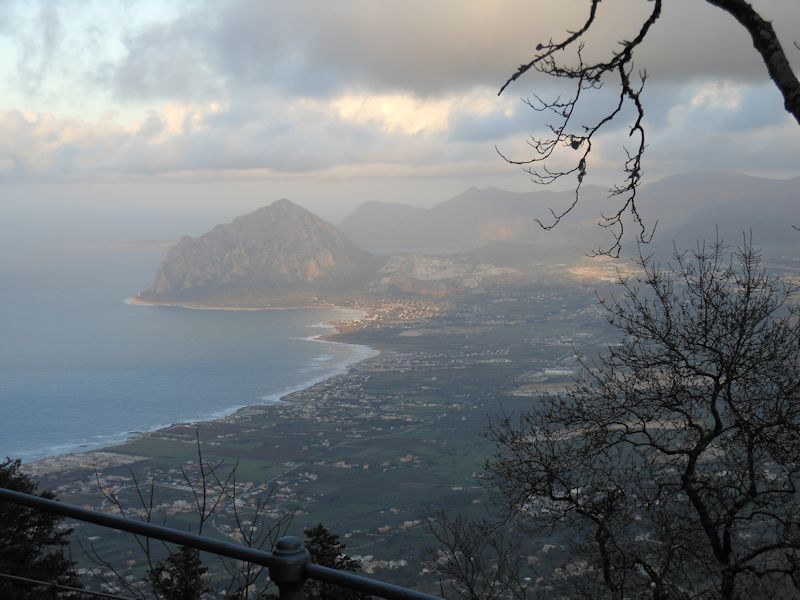
Monte Cofano to the north of Erice -- we'd planned a hike round the coastal trail but got caught up in events and missed it. Beyond that is the peninsula of San Vito lo Capo. The light's different every time you look.

Kristin like the queen surveying her realm, with misgivings
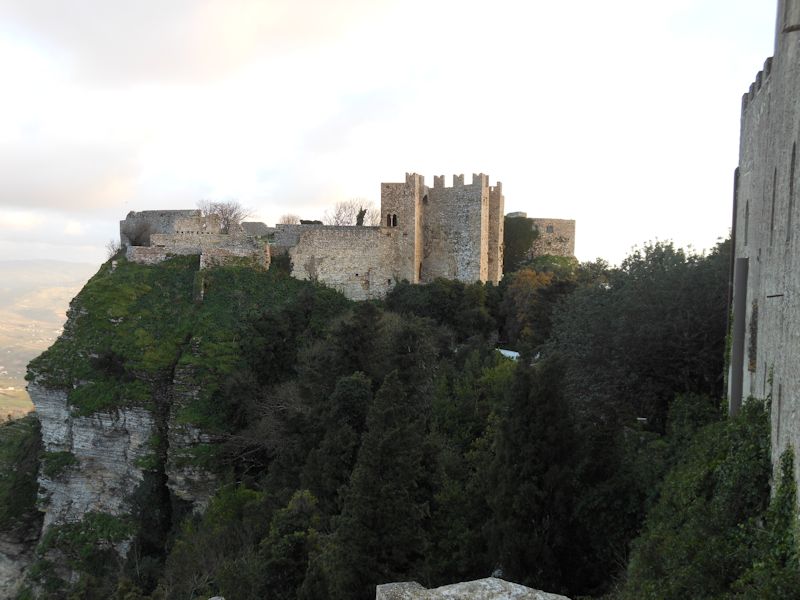
That's the rest of the Norman or Venus Castle, the Castello di Venere, out on the headland; it looks hard to get to.
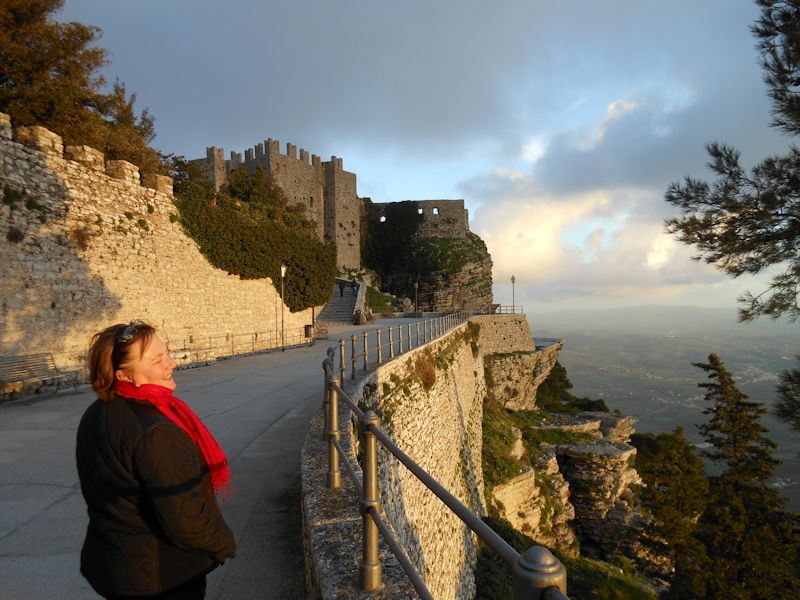
Ha ha, we've found a better way to the castle.
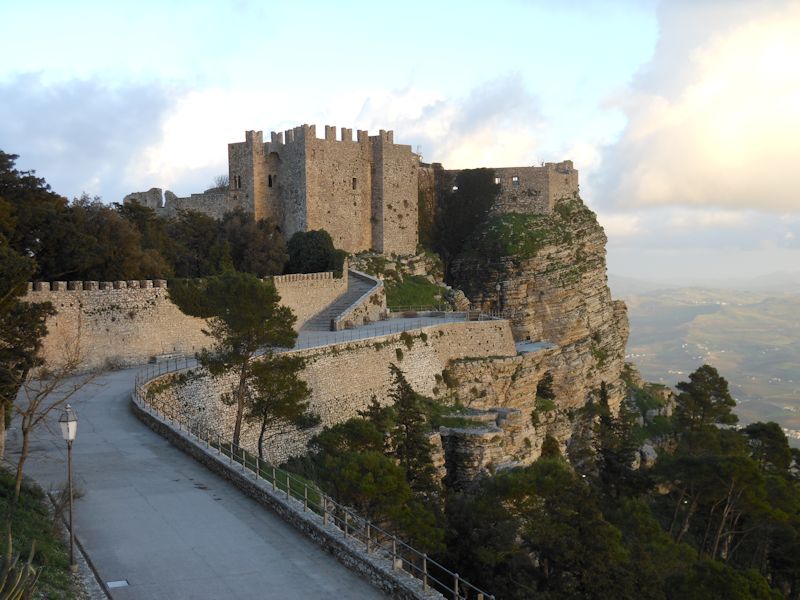
The Norman Castle on the bluffs at the eastern edge of Erice -- we'll take an appreciative first look round inside and come back for more later.
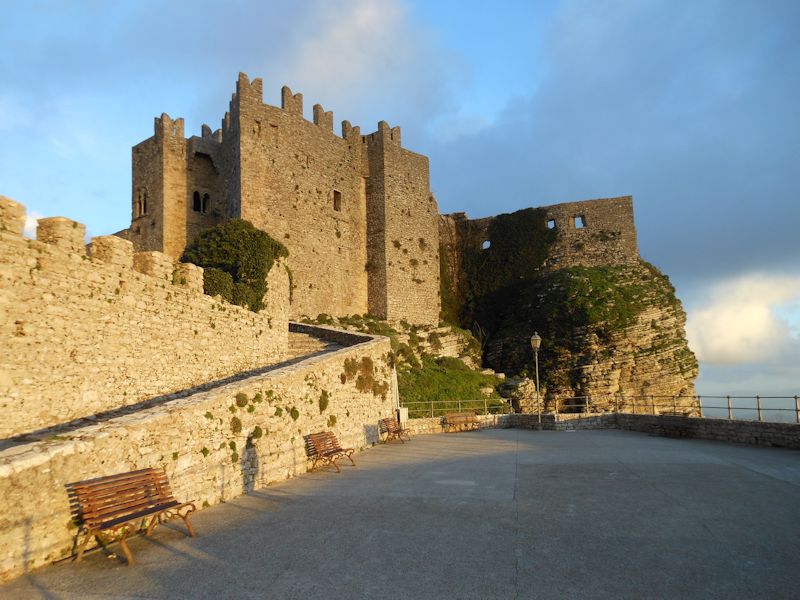
Nope. Closed. Open on Saturday mornings. Austerity, sorry.

A sunset view west past Trapani and the salt flats.
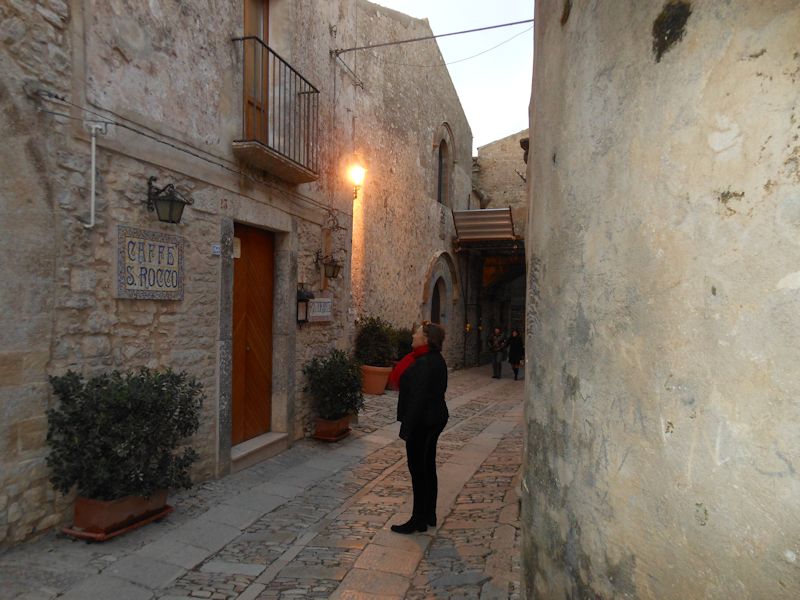
This restaurant's been recommended; closed tonight, but we'll have another go at it later.
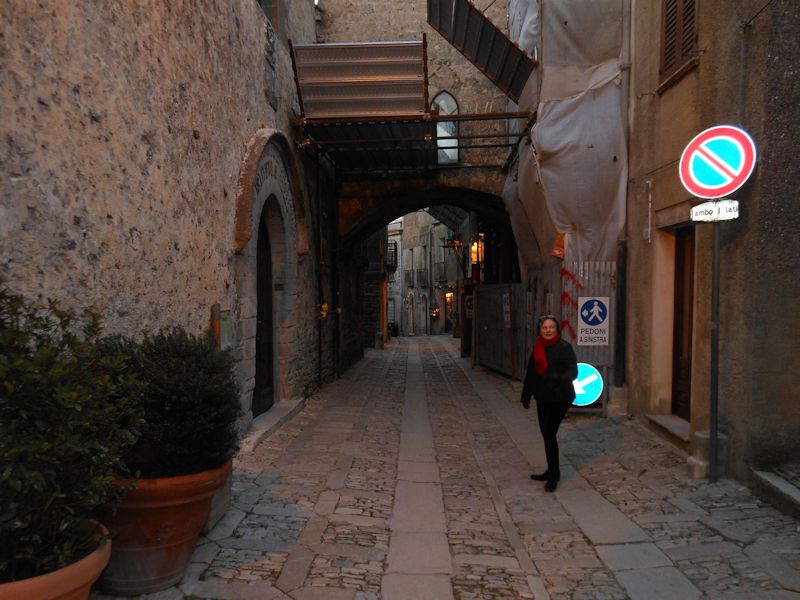
But first things first, we need to find the only grocery shop in town and provide for eventualities.

The Christmas market is being set up in the Piazza Umberto I.
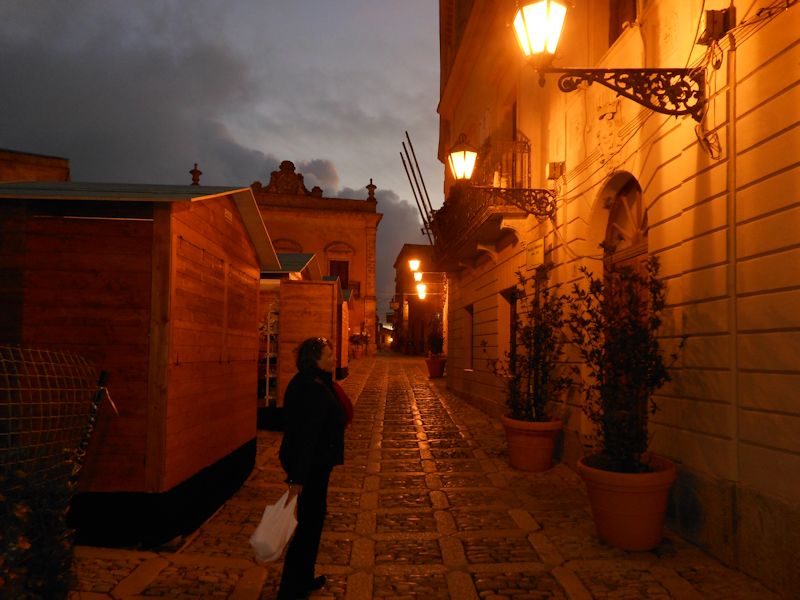
The Piazza Umberto I in the evening
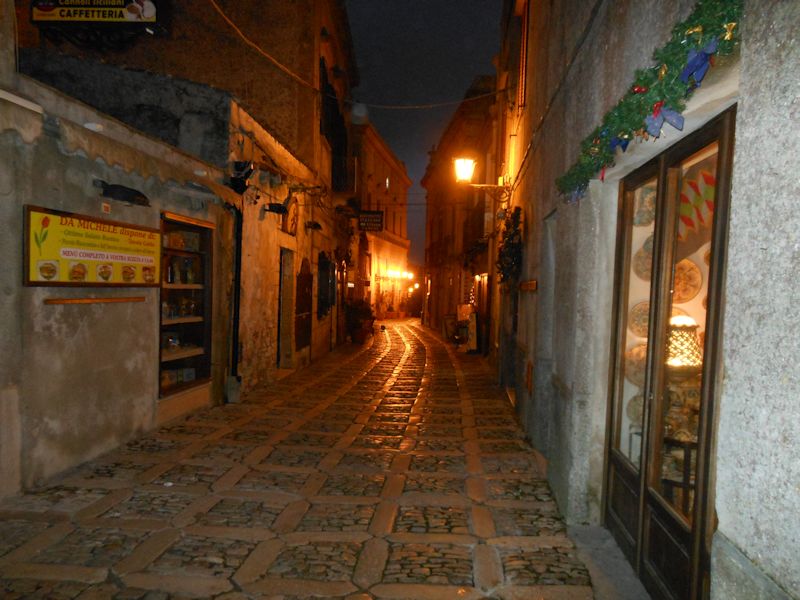
The town's High Street, or Main Street -- the Via Vittorio Emanuele
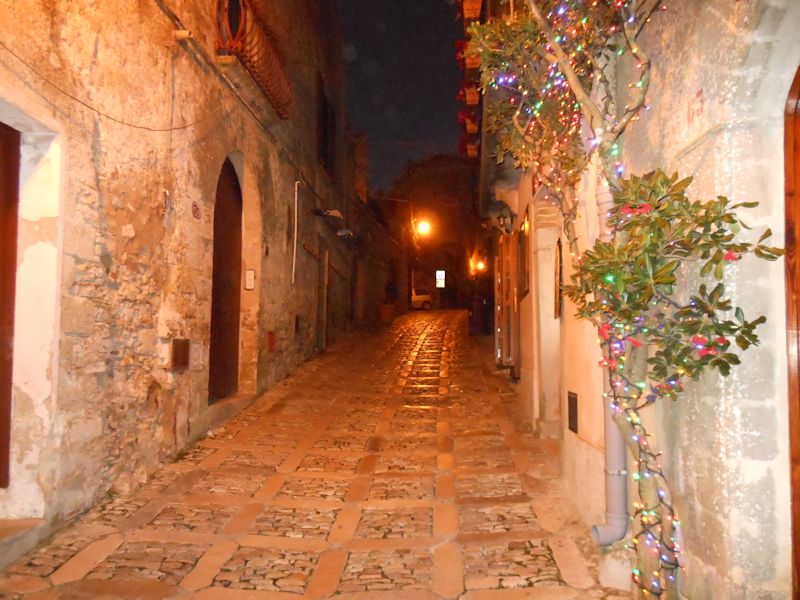
Strolling along the highway
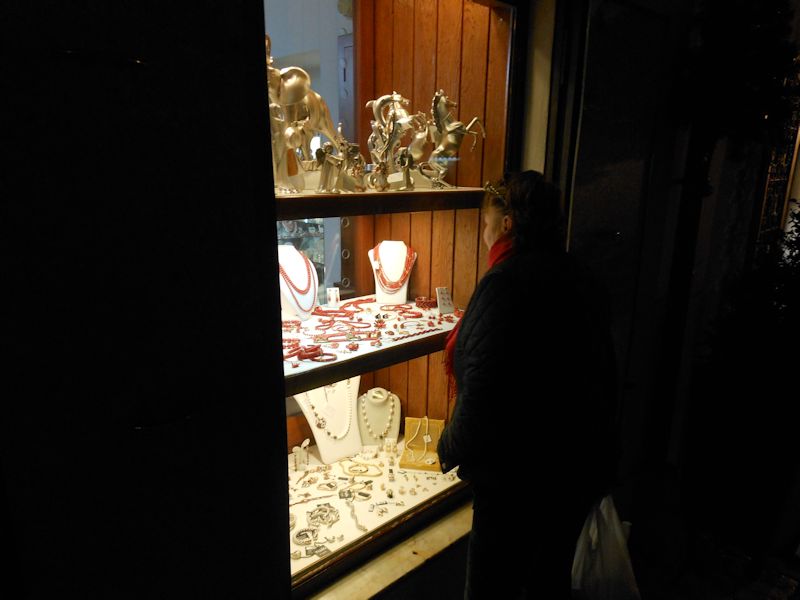
Kristin knows a lot about coral and likes to compare notes with shop windows.
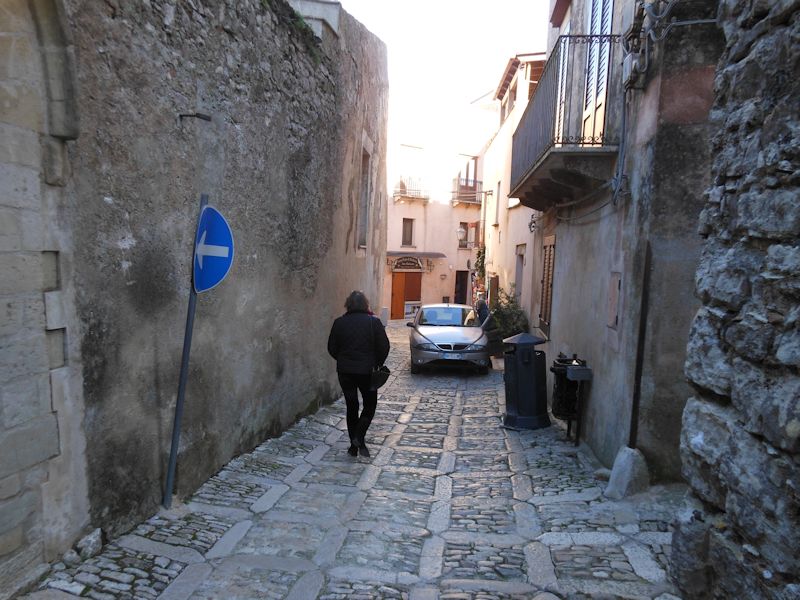
Out early -- well, our 'early' -- bound for the regional sites
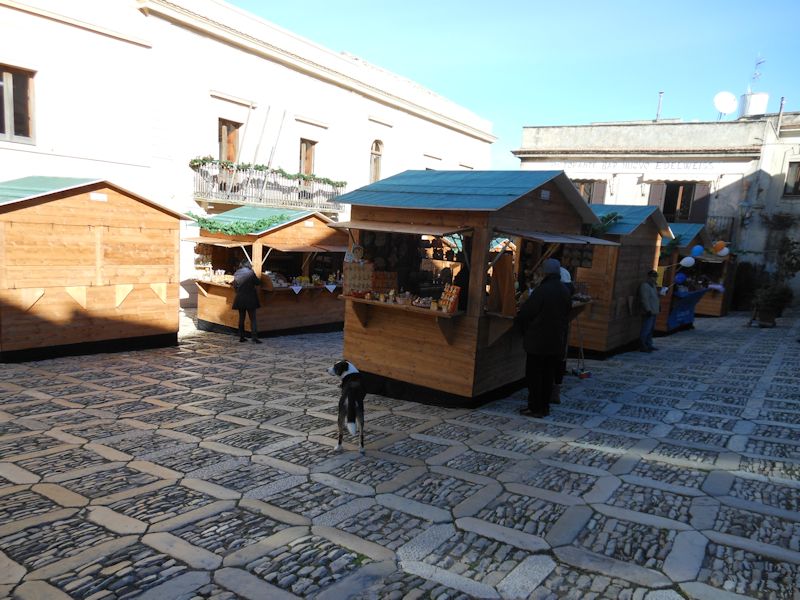
Preparations for the Christmas market are proceeding, but the crowds are holding back.
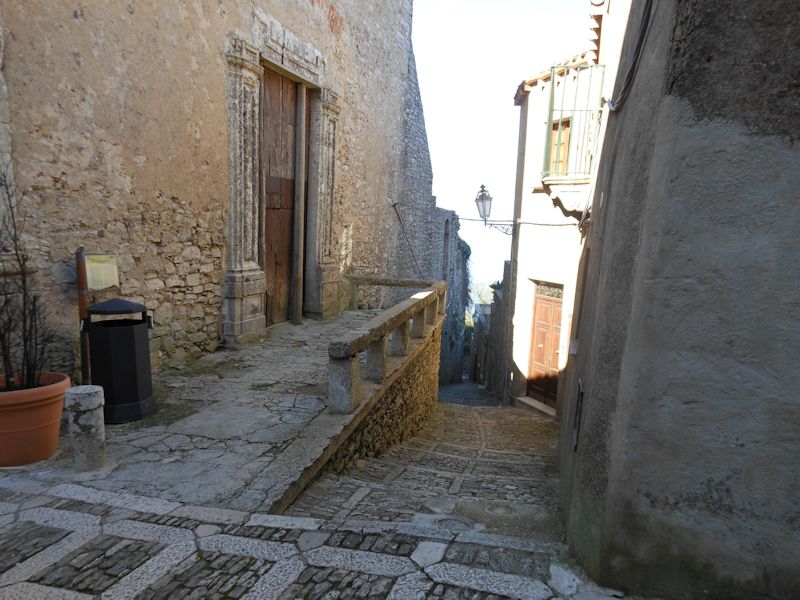
Views along the Via Vittorio Emanuele
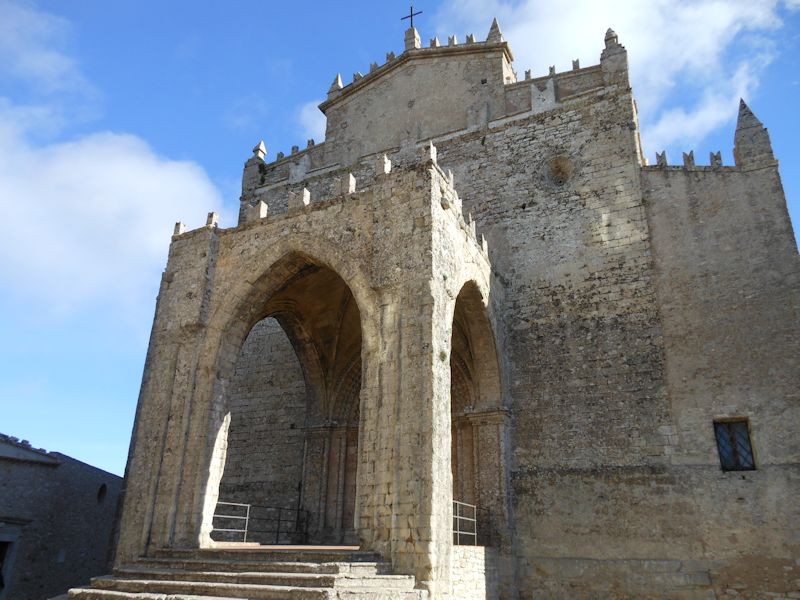
The Duomo, or Chiesa Madre, a lovely building down the hill at the entrance to the town (just by our carpark)
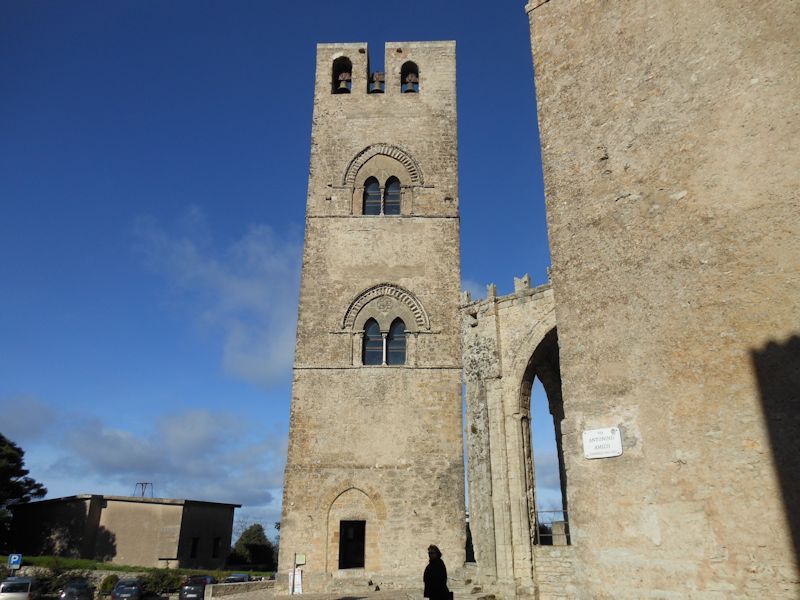
The church was commissioned in 1312 by Frederick III, the frequently excommunicated Aragonese King of Sicily who was really Frederick II but preferred to be called Frederick III. Evidently he was able to hide out in Erice during the War of the Sicilian Vespers (in his case, against both the Angevin French and his own brother James, King of Aragon, and Pope Boniface VIII as well), and he felt he wanted to give something back.
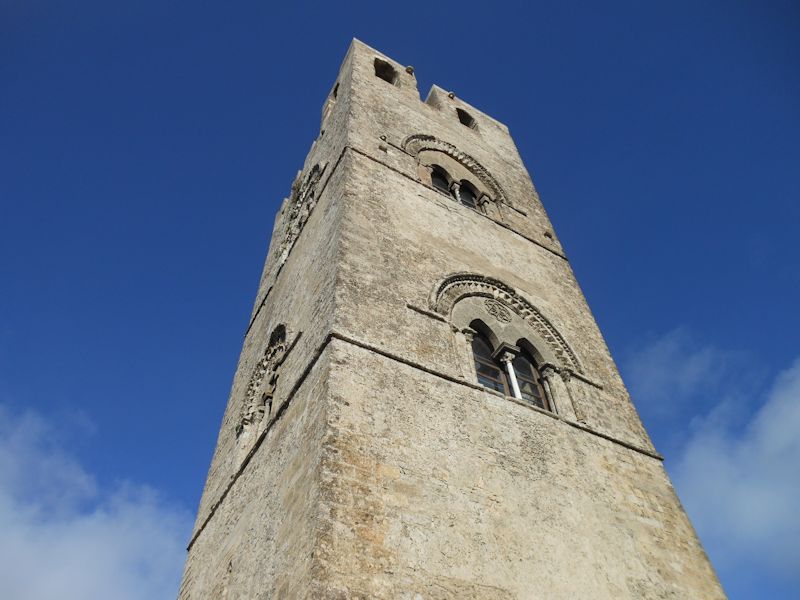
A beautiful stark bell tower . . .
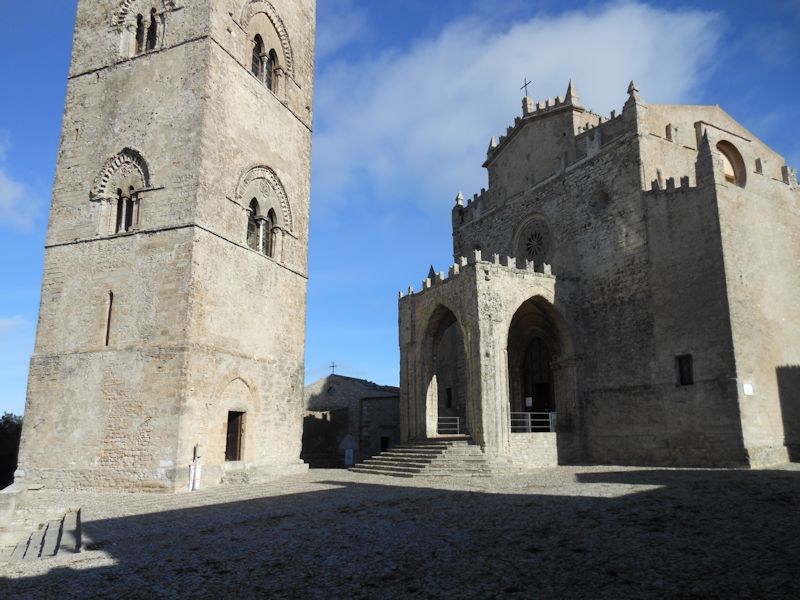
. . . a bell tower separated from the church itself, in a sort of moorish tradition. The Duomo is the best of Erice's 60 churches (that's probably one church for every three inhabitants).

The tasteful interior
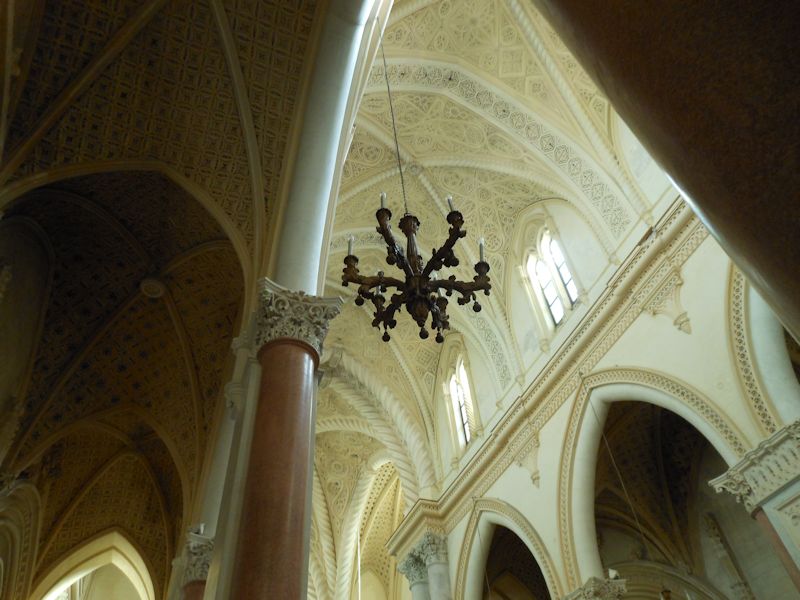
With amazing carved limestone furnishings
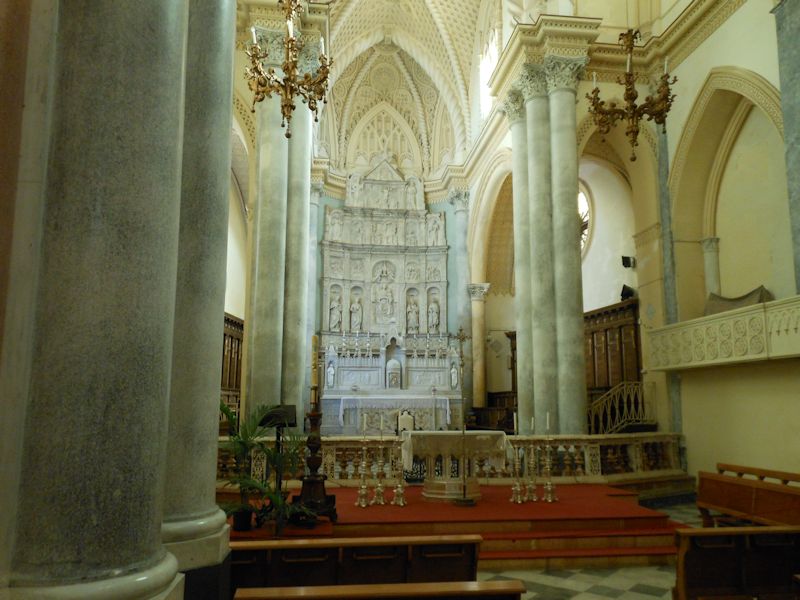
An exemplary church
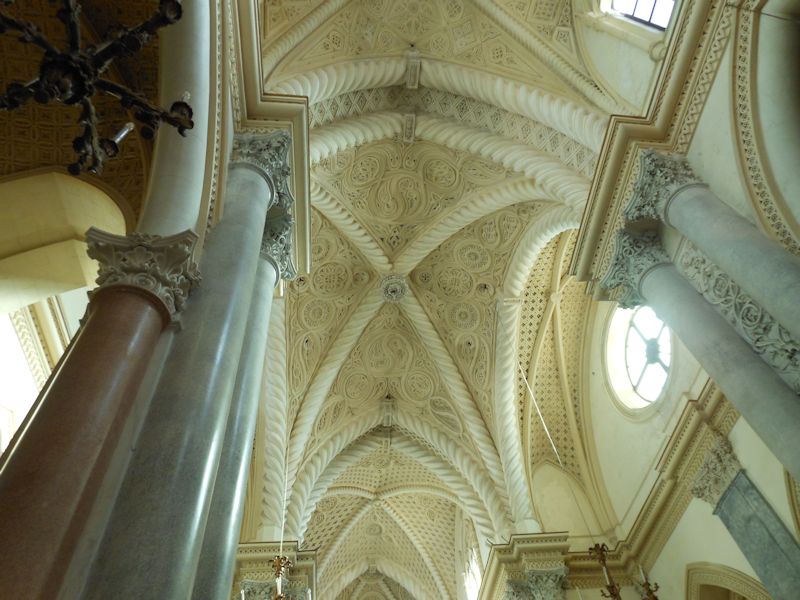
The ceiling of the nave (it's extremely beautiful, but it doesn't actually look so very old)

We're half way up the bell tower, or campanile, and thinking things over.
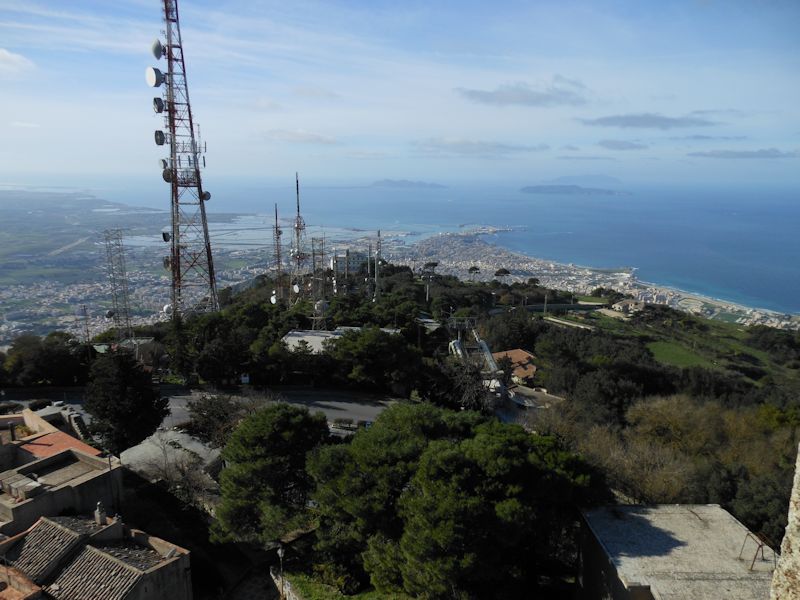
The view from the bell tower of the Duomo at Erice -- Trapani down on the coast, and the Egadi or Aegadian Islands ("islands of goats", like Goat Island in Narragansett Bay, R.I.) in the offing.
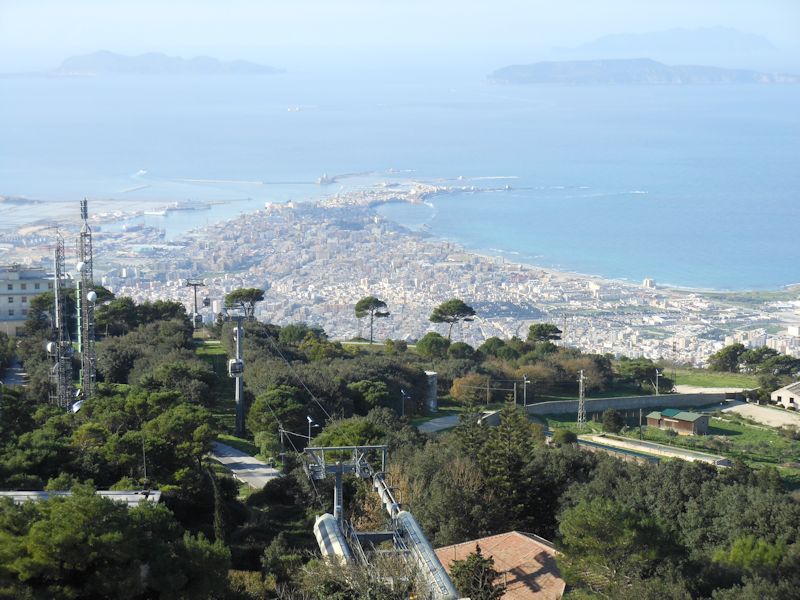
Trapani, quite a big deal now, but back in the days when a good harbor was almost but not quite as important for a town as big defensible cliffs all around it, Trapani was founded by the Elymian Erice folks to serve as their wharf -- in effect, as the commercial sea gateway to Erice. We found Trapani unnavigable and fled south.
Skiers will recognize the cable-car arrangement linking Trapani with Erice -- it's extolled as a tourist draw, but given the wind conditions on the mountain, perhaps you'd never know when you rode down when you'd be able to ride up again, and when you rode up, whether you'd be able to ride down again. So we drove.
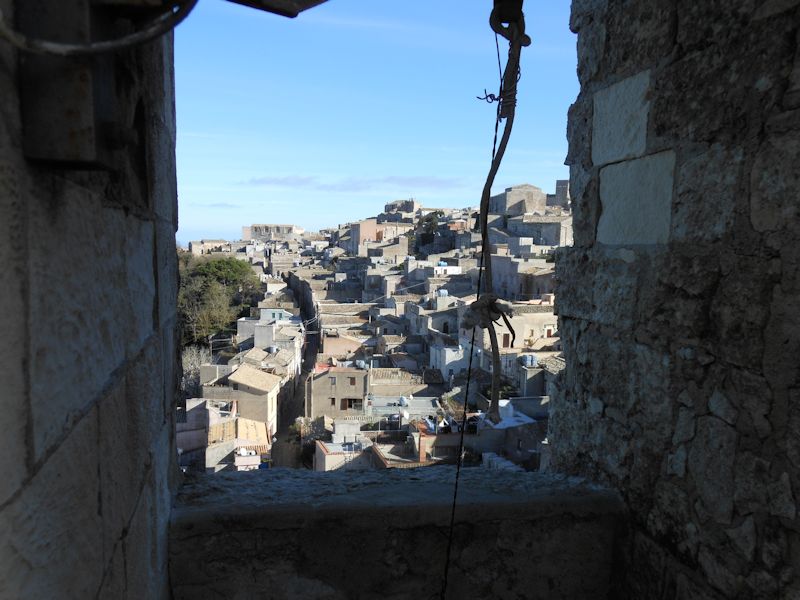
A last look at Erice from the campanile
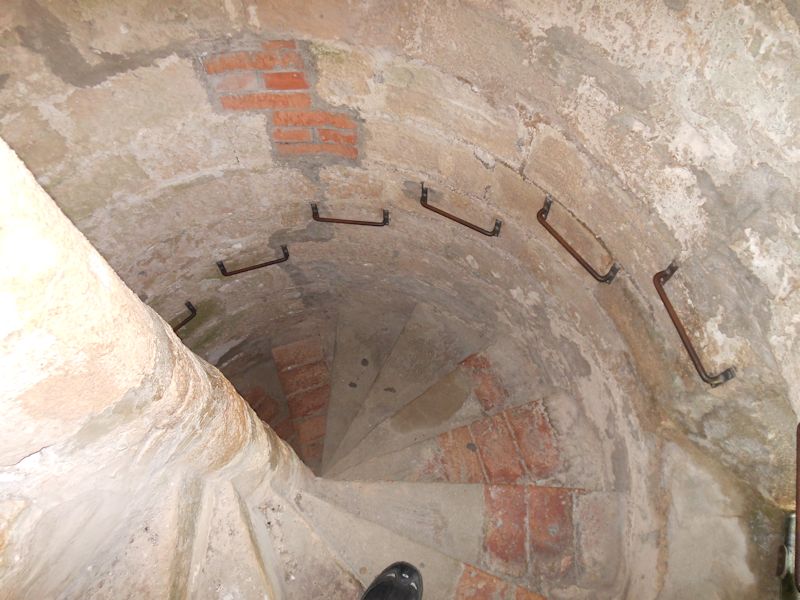
As we start back down, and carry on to explore the southwestern coast of Sicily.


 Feedback
and suggestions are welcome if positive, resented if negative, Feedback
and suggestions are welcome if positive, resented if negative,  .
All rights reserved, all wrongs avenged. Posted 31 January 2013. .
All rights reserved, all wrongs avenged. Posted 31 January 2013.
|
 Dwight Peck's personal website
Dwight Peck's personal website






























































